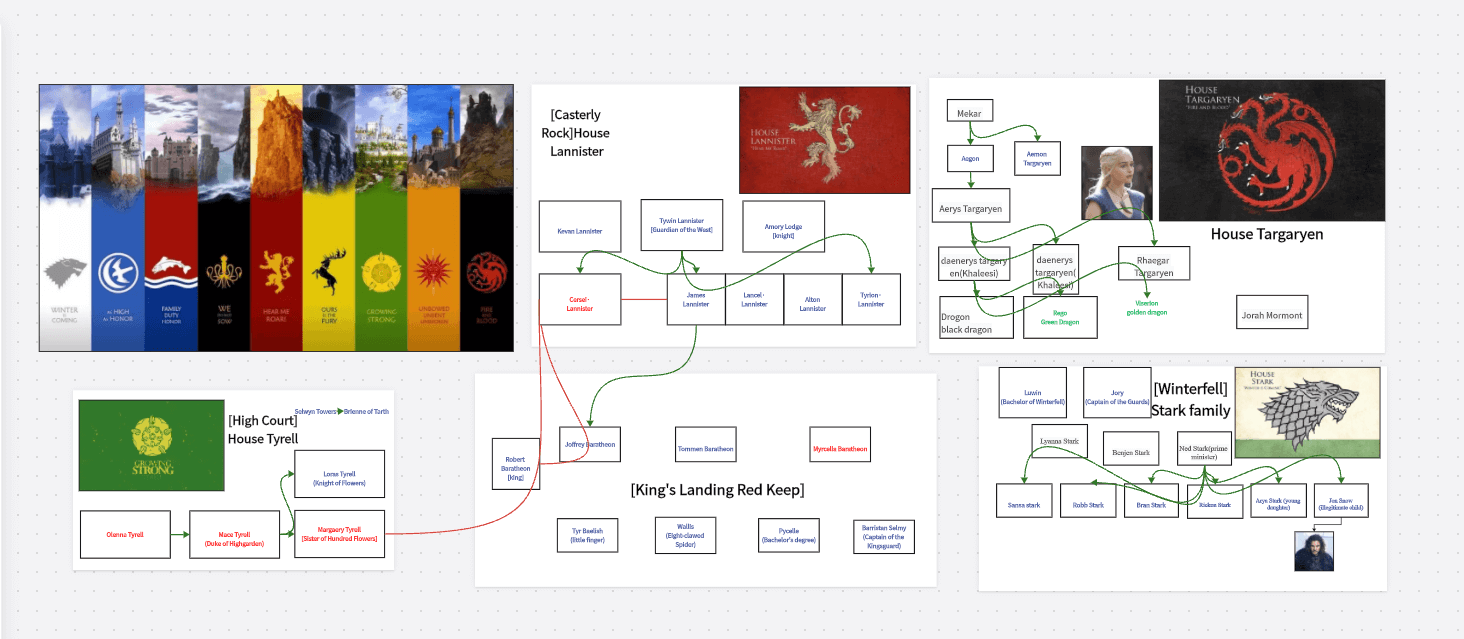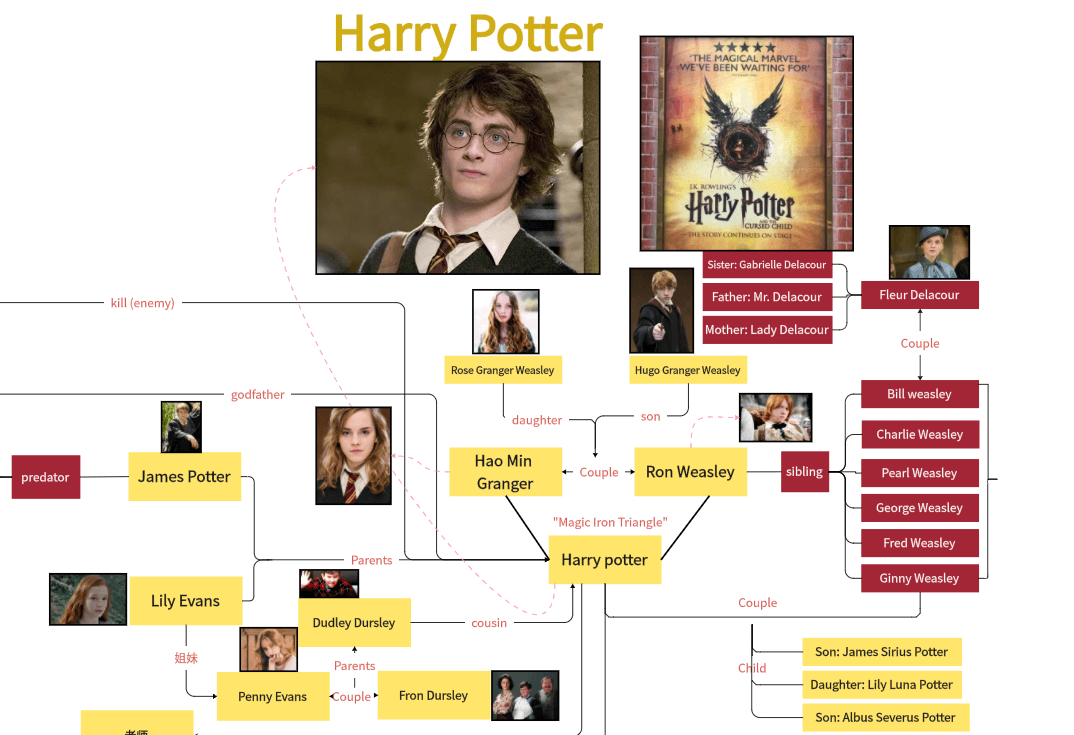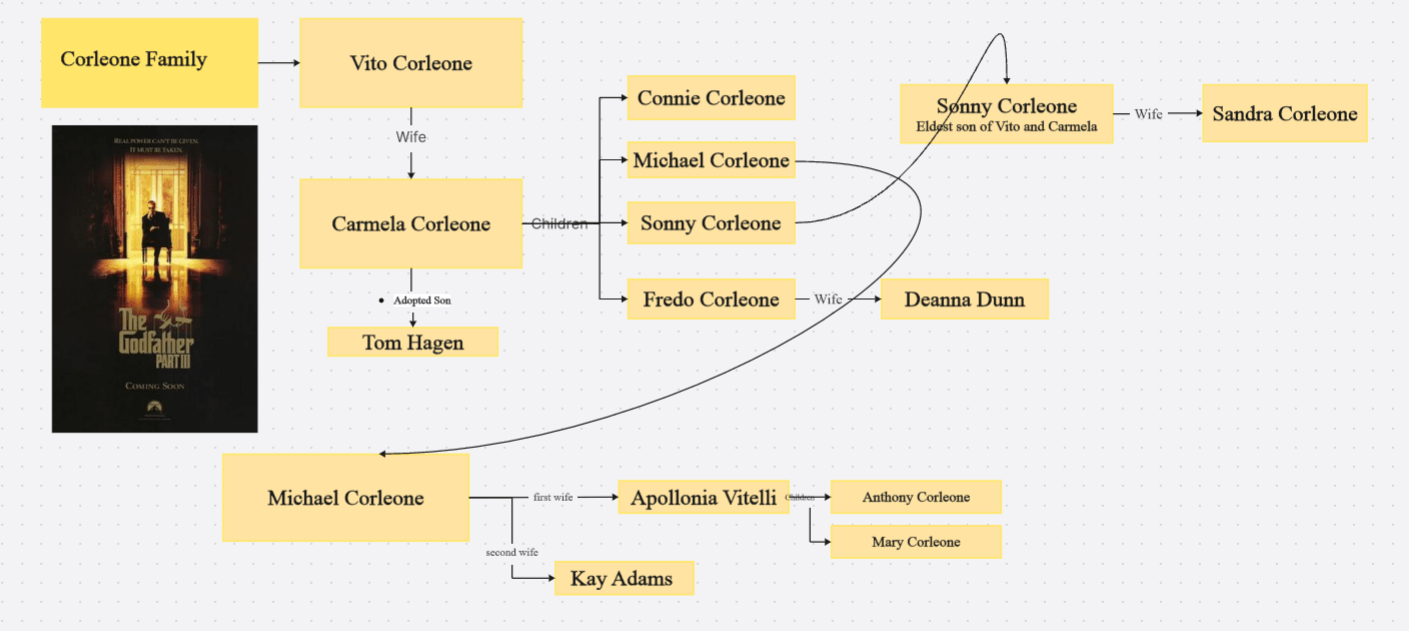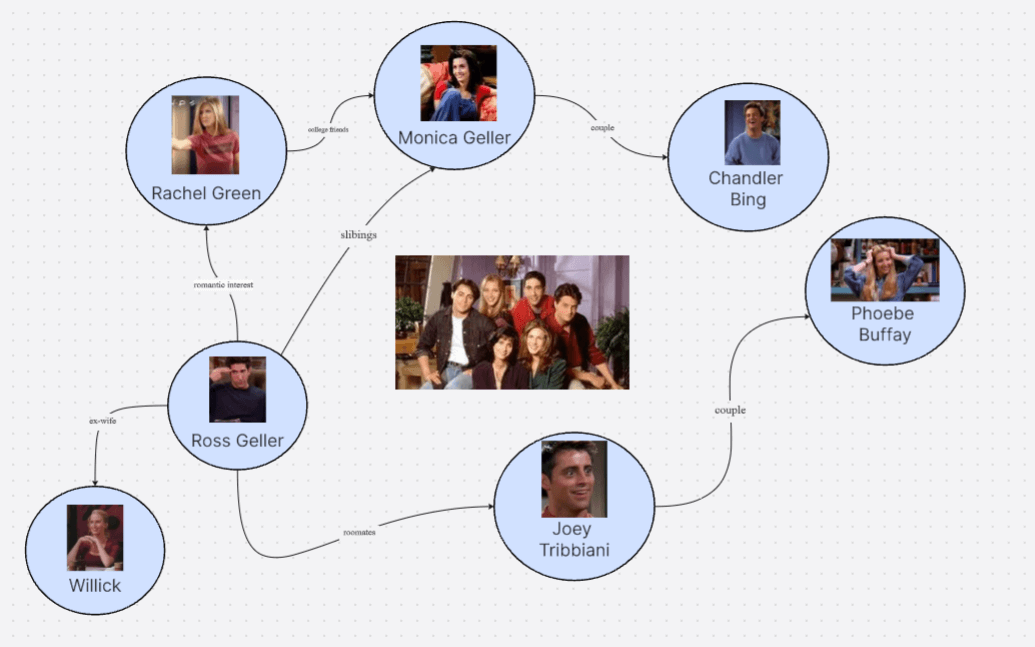A character relationship diagram visually maps out the connections between characters in a story, highlighting relationships such as friendships, rivalries, and family ties. These diagrams help in understanding complex narratives by providing a clear overview of character interactions. For authors, depicting interactions between characters can help create more detailed and engaging stories that resonate with readers. This article will use examples from famous films and books to show you how to create an attractive and clear character relationship diagram using Boardmix. With Boardmix, users can easily organize characters, label relationships, and optimize the layout, making it easier to grasp intricate storylines and character dynamics.
Character Relationships Diagram Templates in Boardmix
1. Game of Thrones
The intricate web of alliances, rivalries, and family ties in Game of Thrones is perfect for a detailed character relationship diagram. From the noble houses of Stark, Lannister, and Targaryen to the key players like Jon Snow and Daenerys Targaryen, Boardmix can help illustrate these complex connections with clarity, making it easier to understand the political and personal dynamics of Westeros.

2. Harry Potter Series
The magical world of Harry Potter features a vast array of characters whose relationships evolve over seven books. A character diagram can map out the connections between Harry, Hermione, and Ron, along with their interactions with other characters like Dumbledore, Voldemort, and the various members of the Order of the Phoenix. Boardmix's intuitive design tools can bring these relationships to life, highlighting the bonds of friendship, enmity, and mentorship.

3. The Godfather
In The Godfather, the intricate relationships between the Corleone family and their associates are central to the story. Using Boardmix, you can create a detailed diagram showing the ties between Vito Corleone, his sons Michael, Sonny, and Fredo, and their connections to other families and characters in the Mafia world. This visual aid can help viewers grasp the complexities of loyalty and betrayal that drive the narrative.

4. Friends
The beloved sitcom Friends revolves around the lives and relationships of six main characters: Ross, Rachel, Monica, Chandler, Joey, and Phoebe. A character relationship diagram can highlight the romantic entanglements, friendships, and family ties that make up the core of the show. Boardmix can help fans visualize these connections in a fun and engaging way, perfect for deep dives into the show's dynamics.

5. The Lord of the Rings
The epic tale of The Lord of the Rings involves a fellowship of characters whose paths are deeply intertwined. A relationship diagram can detail the connections between Frodo, Sam, Aragorn, Legolas, Gimli, and others, illustrating their roles and relationships within the quest to destroy the One Ring. Boardmix's capability to handle extensive and intricate diagrams makes it an ideal tool for capturing the rich tapestry of Middle-earth.

Three-Step Guide to Creating Character Relationship Diagrams
Although character relationship diagrams might seem complex, you can create them in just three steps using Boardmix.
Step 1: Identify Main Characters
Open Boardmix in your browser, register for free and click the "New File" button to create a blank canvas. On the infinite canvas, first list the main characters, usually centering around the primary characters and then connecting to secondary characters.

Step 2: Match Characters and Relationships
On the Boardmix whiteboard, list the secondary characters who have close relationships with the main characters and connect the characters. To do this, click the "Connector" tool on the left side of the screen and draw lines between the characters to represent their relationships.

Once you have connected the characters, the next step is to label their relationships. For example, if two characters are friends, draw a line between them and label it "Friends." If two characters are enemies, draw a line between them and label it "Enemies." You can also use different colors for the lines to represent different types of relationships. Boardmix's line tool supports adding text annotations by double-clicking on the line. In the text box, you can add notes about the characters, such as their personality traits, backstory, and motivations.
Step 3: Optimize the Layout of the Character Relationship Diagram
Now that you understand the logic of drawing character relationship diagrams, the next challenge is layout, especially when the character relationships are intricate. Here are four layout techniques for reference:
-Hierarchical Layout: This top-down or bottom-up approach places the main characters at the top or bottom, with other characters positioned below or above them based on their importance or relationship to the main character. This layout is useful when the protagonist is central to the story and has many relationships.
-Circular Layout: This layout is ideal for visualizing relationships among equally important characters in a story. Place the main character in the center, draw lines outward, and connect them to other characters arranged in a circle.
-Network Layout: Useful when there are many characters with complex relationships and no clear hierarchy. Each character is represented by a node, and lines connect them based on their relationships. This layout can show how characters are interconnected and help identify patterns in their relationships.
-Timeline Layout: This layout shows how relationships between characters change over time. It is especially useful when characters have long-term relationships or significant events that affect their relationships. Place the main character in the center and draw lines outward to show how their relationships evolve.
In addition to ensuring a balanced layout, you can follow these guidelines for using colors and symbols: use different colors or symbols to represent different types of relationships, such as romantic or competitive relationships. This makes the diagram easier to read and understand. Also, label each character and include their pictures to make the diagram more attractive and informative. You can also annotate significant events in the story that impact their relationships.
By using these layout techniques, you can create a clear and effective character relationship diagram that accurately represents the relationships between characters in a story.
After sharing these tips, you should have a clear understanding of how to create character relationship diagrams. To quickly get started, open Boardmix on your web and follow the three steps outlined in this guide. You can create a visual representation of characters and their relationships, helping you quickly understand complex character relationships, grasp the core plot points, and comprehend the true essence behind these stories.









